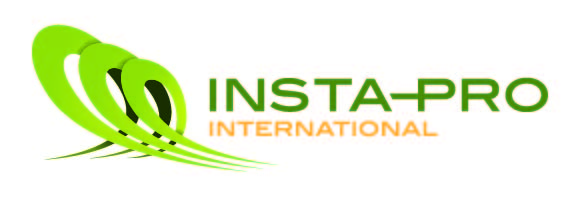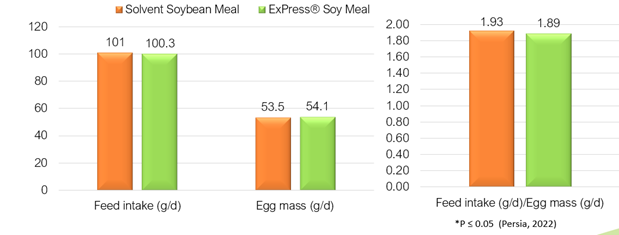
Getting Ahead with High-Quality Soymeal for Layers
How key takeaways from the Virginia Tech layer trial benefit your operation
By: Dr. Janeth Colina
Due to the high nutritional value and relatively inexpensive cost; eggs are an affordable source of essential lipids, proteins, vitamins, minerals, and trace elements, while offering a moderate calorie source (about 140 kcal/100 g)1 in human diets. According to the Food and Agriculture Organization2, in the last three decades world egg production has increased by 150%. When you align this fact with egg consumption is forecasted to reach 138M tons by 20304; it is clear the industry needs to continue to invest in research and development to improve efficiency and production. The quickest way to innovation is by analyzing digestibility and feed to gain ration in what is in the current diet. This was the target of a recent feeding trial conducted by Virginia Tech in the United States.
The trial was set up to analyze the digestibility comparisons of soybean products. Soybeans were chosen as the focal ingredient since they are fed to animals around the world to convert soy proteins and energy from oil into eggs for human consumption. When soybeans are processed using mechanical technology (high-shear dry extrusion followed by mechanical oil pressing to partially de-oil the extruded full-fat soy), nutritional value is added to soybeans resulting in a chemical-free and highly digestible ingredient (ExPress® soy meal).
When processed under the proper parameters, the cells are thoroughly ruptured deactivating the anti-nutrients, which, in turn promotes greater digestibility of amino acids in the animal’s diet vs commodity soybean meal and improves the animal performance.
To showcase the difference in performance, in a 2021 Virginia Tech conducted a trial focused on the response of commodity vs ExPress® soy meal in layers diets. The goal was to test the hypothesis that the performance and egg quality of 22–37-week-old laying hens would be enhanced using ExPress® soy meal vs a control of solvent-extracted soybean meal.
The results prove an improved feed conversion in layers fed ExPress®soymeal compared to the solvent extracted soybean meal. Specifically, the feed intake of layers fed ExPress®soymeal was 0.7 g/day less feed and produced 0.6 g/day more egg mass resulting in an improvement of 2% in feed conversion as shown in the graph below.
This translates to a potential 8% reduction in feed costs and positive impact on profitability of poultry operations. In addition, at the trial end, hen housed egg production (HHEP, does not account for hen mortality) and egg production corrected for mortality (hen day egg production HDEP) were similar between both groups. In terms of cost of egg production standpoint, HDEP is good as it measures the effects of both egg production and mortality4.
The Virginia Tech trial also evaluated egg quality traits. Layers fed ExPress® soy meal had similar internal and external egg-quality traits across categories as shown in the chart below, except a slightly darker yolk when compared to those fed solvent-soybean meal (indicated with different superscripts). Although significant, that difference in color is barely perceptible. Also, it is important to point out that the color of the yolk depends to a large extent on carotenoids contained in plant seeds5.
Given that the egg quality of hens fed ExPress® was unaltered; utilizing properly processed high-shear dry extrusion and mechanical extraction to create value-added soy ingredients results in significant gains in egg production and promotes sustainable practices by maximizing efficient use of feed.
Feeding Trial Recommendations:
• Use ExPress® soy meal to enhance feed conversion ratio.
o Reduce the total amount of feed/layer
o Less total feed and improved egg mass
Reduce feed costs
• Improve feed efficiency benefits without altering the egg quality
• Apply sustainable management practices, including the use of highly-digestible ingredients to reduce feed intake and promote better performance, to meet current consumer demands.
References
1. Réhault-Godbert et al., 2019. The Golden Egg: Nutritional Value, Bioactivities, and Emerging Benefits for Human Health. Nutrients. 11: 684.
2. Production | Gateway to poultry production and products | Food and Agriculture Organization of the United Nations (fao.org)
3. Global Chicken Egg Market Is Soaring Despite the Pandemic 2021.
4. Kljak et al., 2021. Plant Carotenoids as Pigment Sources in Laying Hen Diets: Effect on Yolk Color, Carotenoid Content, Oxidative Stability and Sensory Properties of Eggs. Foods. 10:721.
5. Xia et al., 2022. Discriminant Analysis of the Nutritional Components between Organic Eggs and Conventional Eggs: A H NMR-Based Metabolomics Study. Molecules. 27: 3008.

Contact Us

